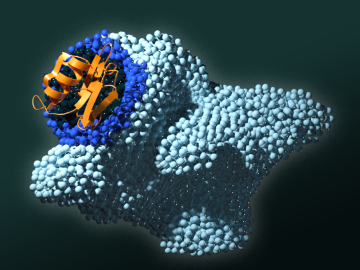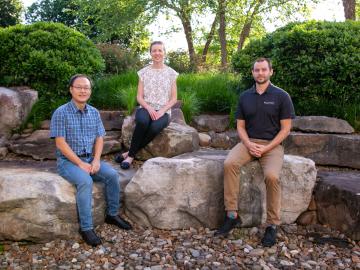
Filter News
Area of Research
- (-) Biology and Environment (52)
- (-) Isotopes (3)
- (-) National Security (25)
- Advanced Manufacturing (2)
- Biology and Soft Matter (1)
- Building Technologies (2)
- Clean Energy (49)
- Computational Biology (1)
- Computer Science (1)
- Electricity and Smart Grid (1)
- Functional Materials for Energy (2)
- Fusion and Fission (15)
- Materials (43)
- Materials for Computing (6)
- Neutron Science (14)
- Renewable Energy (1)
- Supercomputing (39)
News Topics
- 3-D Printing/Advanced Manufacturing (4)
- Advanced Reactors (1)
- Artificial Intelligence (6)
- Big Data (3)
- Bioenergy (15)
- Biology (26)
- Biomedical (4)
- Biotechnology (3)
- Buildings (2)
- Chemical Sciences (7)
- Clean Water (2)
- Climate Change (18)
- Composites (2)
- Computer Science (9)
- Coronavirus (3)
- Critical Materials (1)
- Cybersecurity (5)
- Decarbonization (8)
- Energy Storage (5)
- Environment (24)
- Exascale Computing (2)
- Frontier (2)
- Grid (5)
- High-Performance Computing (5)
- Hydropower (5)
- Isotopes (1)
- Machine Learning (6)
- Materials (5)
- Materials Science (3)
- Mercury (1)
- Microscopy (6)
- Nanotechnology (2)
- National Security (13)
- Net Zero (1)
- Neutron Science (2)
- Nuclear Energy (1)
- Partnerships (3)
- Physics (1)
- Polymers (1)
- Security (4)
- Simulation (1)
- Space Exploration (1)
- Summit (3)
- Sustainable Energy (9)
- Transformational Challenge Reactor (1)
- Transportation (1)
Media Contacts

Researchers at ORNL have definitively linked the function of a specific domain of proteins important in plant-microbe biology to a cancer trigger in humans, knowledge that had eluded scientists for decades.

In front of family and friends, Lt. Col. Jessica Critcher and Maj. Micah McCracken gave their final report on their eye-opening year as ORNL military fellows.

As the United States moves toward more sustainable and renewable sources of energy, hydropower is expected to play a pivotal role in integrating more intermittent renewables like wind and solar to the electricity grid

Microorganisms may provide hope that peatlands can withstand hotter temperatures in a changing climate.

The Department of Energy’s Office of Science has selected three Oak Ridge National Laboratory scientists for Early Career Research Program awards.

The Atmospheric Radiation Measurement Data Center is shepherding changes to its operations to make the treasure trove of data more easily available accessible and useful to scientists studying Earth’s climate.

To optimize biomaterials for reliable, cost-effective paper production, building construction, and biofuel development, researchers often study the structure of plant cells using techniques such as freezing plant samples or placing them in a vacuum.

Scientists develop environmental justice lens to identify neighborhoods vulnerable to climate change
A new capability to identify urban neighborhoods, down to the block and building level, that are most vulnerable to climate change could help ensure that mitigation and resilience programs reach the people who need them the most.

Technology developed at ORNL to monitor plant productivity and health at wide scales has been licensed to Logan, Utah-based instrumentation firm Campbell Scientific Inc.

ORNL scientists will present new technologies available for licensing during the annual Technology Innovation Showcase. The event is 9 a.m. to 3 p.m. Thursday, June 16, at the Manufacturing Demonstration Facility at ORNL’s Hardin Valley campus.


